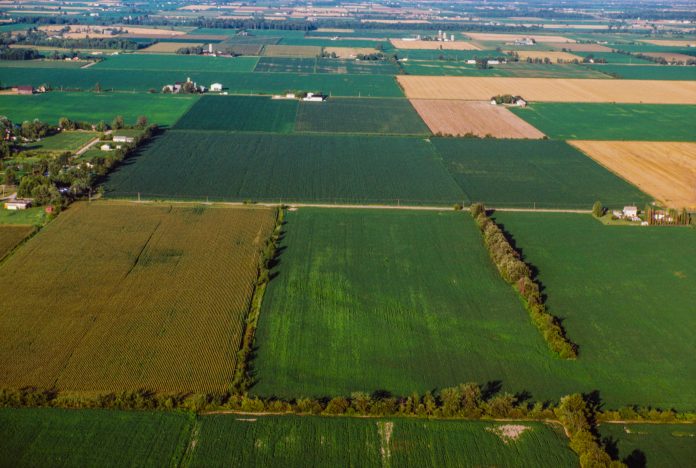Greenhouse weather in northeast Ohio has the crops popping higher. Corn is now tall enough that, from the road on flat fields, the holes don’t show. Corn has grown 3 feet in the last three weeks in my area, which fortunately for us, is one of the garden spots of Ohio.
Unfortunately, local garden spots are late planted and have drowned spots that will limit yields of the corn and beans that have improved dramatically in recent days.
High temps and rain
Temperatures in the high 80’s and low 90’s, combined with more than adequate rain, have pushed crops that are terribly late.
In Ashtabula County, there are early fields with good stands, but they did not grow much in the wet of May and June. Farther south are more fields that were not planted, or planted two or three times, or planted historically late.
All this and we are still mostly better than the intensively planted areas of northwest Ohio.
For planting and growth progress, Ohio has been the worst state most of the spring, passed only occasionally by Indiana. That greenhouse weather has the market thinking good crops instead of crops that are improving from awful.
Corn prices
Prices were down 23 cents on corn the week of July 15, and continued lower July 22, with the December corn futures down another 9 cents. The July 23 corn prices are slightly higher, with December up a penny.
At the same time, November soybean futures have been trading in a 40-cent range, with no direction. With the drop July 22, we have fallen out of that range, and are now almost 46 cents below the high. July 23 we are trading $9.02 1⁄2, down more than 3 cents. The low was $8.90 1⁄4 July 7.
Wheat up
September Chicago wheat futures are actually up $3 1⁄4 cents the morning of July 23 to $4.90 1⁄2. The wheat markets are following the corn, and not trading on their own.
This is particularly true of Kansas City futures on the hard red winter wheat. There, the September futures are trading at $4.32 3⁄4 the morning of July 23, just a dime below the corn futures in Chicago. At this relationship, wheat is easily substituted for corn in the feedlot rations. The actual farmers in this market are hanging onto corn, even though processors and end users are pushing hard to get it.
Reluctant to sell
Basis in Ohio has been as high as 80 cents over futures in markets that are normally par to futures. This indicates that buyers can’t pry the corn out of farmer hands, and that the futures markets are under priced.
Farmers are reluctant to sell corn when they don’t see it doing well in the field, or did not get it planted. All parties want to hang onto corn in case they need it for blending because the new crop has low test weight from late planting, early frost or a combination.
Waiting game
So, we continue the dance where market analysts and farmers think the crops are wildly overestimated by USDA, but the futures traders are forced to try to believe the government numbers are correct, as they usually drive the market.
We will not have hard numbers from USDA until the September reports, when we reflect actual prevented planting numbers and a new survey of farmers.
Looking ahead
The June 1 survey had them still optimistic about planting, but it never happened. Traders anticipated that corn conditions were improving, and in many areas they were. In fact, however, USDA reported July 22 that conditions actually declined over the country by 1%. They have the U.S. at 47% good, just 10% excellent, for a total of 57.
The week of July 15, we were at 58%, and the last year at this time, we were at 72%.
Ohio is at 31% good, just 4% excellent. We are running in a dead heat with Indiana for poorest crop condition.
Soybeans conditions came in at the same pathetic numbers as last week, 46%, plus 8%, for the country, 27%, plus 3%, for Ohio. Last year, the country was at 70% now.
On the bright side, the middle of July is seasonally when we break corn prices. We have done it again, even if field observations would have us thinking we should be going the other way.













